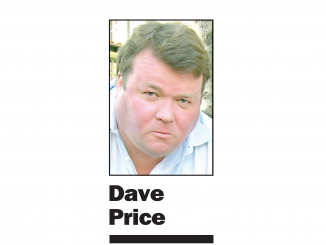OPINION
BY DAVE PRICE
Daily Post Editor
Menlo Park has a problem because residents from the Belle Haven neighborhood haven’t been able to win a seat on the City Council.
The solution City Council is considering, however, is draconian and needs more thought.
The solution that got the most attention at a council meeting Wednesday was to divide the city into five districts and have voters in each district elect their own council member every four years.
In other words, the city would switch from electing its five council members at-large to district elections.
Council didn’t make a final decision, and there are other options on the table, but a five-district approach was the most widely discussed approach during the meeting.
One choice instead of five
The problem with district elections is residents lose the ability to select all five council members. Instead, every resident will only get to pick one person for council every four years.
Certainly this would solve the Belle Haven’s problem and stop the city from being sued by a Malibu lawyer who has been going around the state suing cities that have similar problems.
But district elections would mean that every resident would see their voting rights reduced by 80%.
Going to districts will have some unintended consequences too. Land-use attorney Tim Tosta pointed out a couple of problems with district elections at Wednesday’s meeting. He’s familiar with San Francisco, where they have 11 districts.
Balkanization
He warned that dividing the city into districts leads to balkanization. “It becomes one district, one vote,” he said. “So if I want to get something done in North Beach San Francisco, and if I don’t have (Supervisor) Aaron Peskin’s support, I’m not going anywhere, and it really doesn’t matter where the other supervisors stand.”
With district elections, it takes fewer votes to get elected. Last November, Ray Mueller and Catherine Carlton were re-elected with 8,231 and 7,555 votes, respectively. If you divide the city into five, it will take somewhere between 1,500 and 1,700 votes to win a seat on council.
“It does allow people who never thought of running for election to run because the campaigns are cheaper and the number of votes needed are cheaper,” Tosta said. “The problem is that some of those people actually do run and shouldn’t, and they get to sit here for four years, (which is) not necessarily in the best interests of the city.”
Tosta said that elegantly. Let me translate. With district elections, it’s possible that total kooks will get elected because the barrier to entry will be so low.
And it won’t take much to swing an election. “You could have a soccer club determine the outcome of an election,” Tosta warned.
To be fair, council hasn’t endorsed the district election approach, but it received the most consideration at Wednesday’s meeting. Council’s in a hurry because of deadlines imposed by the California Voting Rights Act that the Malibu attorney, Kevin Shenkman, is citing in his threat to sue the city.
Two more meetings, on Oct. 30 and Nov. 29, are planned before council makes a decision.
The California Voting Rights Act was intended to give places like Belle Haven — where 69% of residents are Latino and 19% black — a greater say in local government. Overall, Menlo Park is 70% white, 18% Latino, 10% Asian and 5% black.
Given the way the law is written, it’s inevitable Menlo Park will have to change its election system. But a five-district approach isn’t the only choice. And it’s possibly the worst choice.
A blended, balanced alternative
How about a blend of the old and new? The city should consider going to a seven-member council, with three council members elected at-large and four by districts.
This hybrid approach gives residents the best of both worlds — they would be able to select four council members (one for their district and three at-large). It also would ensure that the Belle Haven would have a representative on council, thereby stopping the Malibu attorney’s lawsuit.
Yes, you would have the danger of incompetent people winning district seats thanks to the get-out-the-vote effort of a soccer club, but the three at-large members would counter-balance any potential harm.
Long-winded speeches
There’s only one drawback: Meetings would become a bit longer with seven politicians up there making speeches instead of five. (Long speeches from the council dais might be the reason Palo Altans voted to reduce their council from nine to seven, a switch that takes place next year.)
But speeches can be curtailed with time-limits and other rules council can impose on itself.
Council should back away from an approach that takes away so much power from the voters and look for a compromise that balances the rights of the minority with the rights of everyday citizens. I think a seven-member council meets that test.
Editor Dave Price’s column appears on Mondays. His email address is [email protected].



